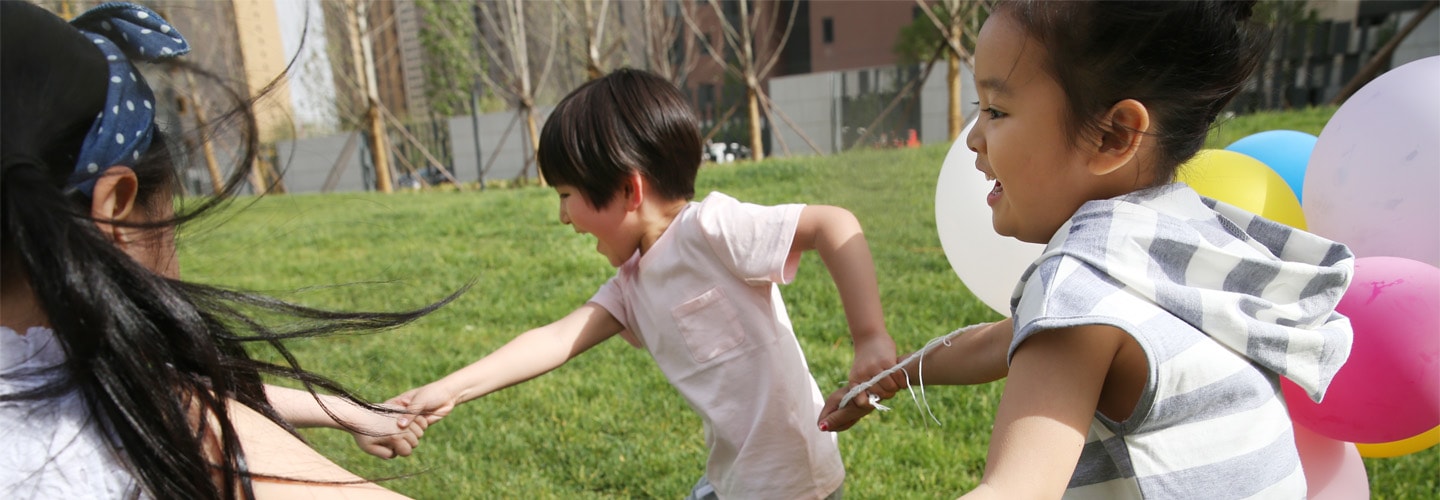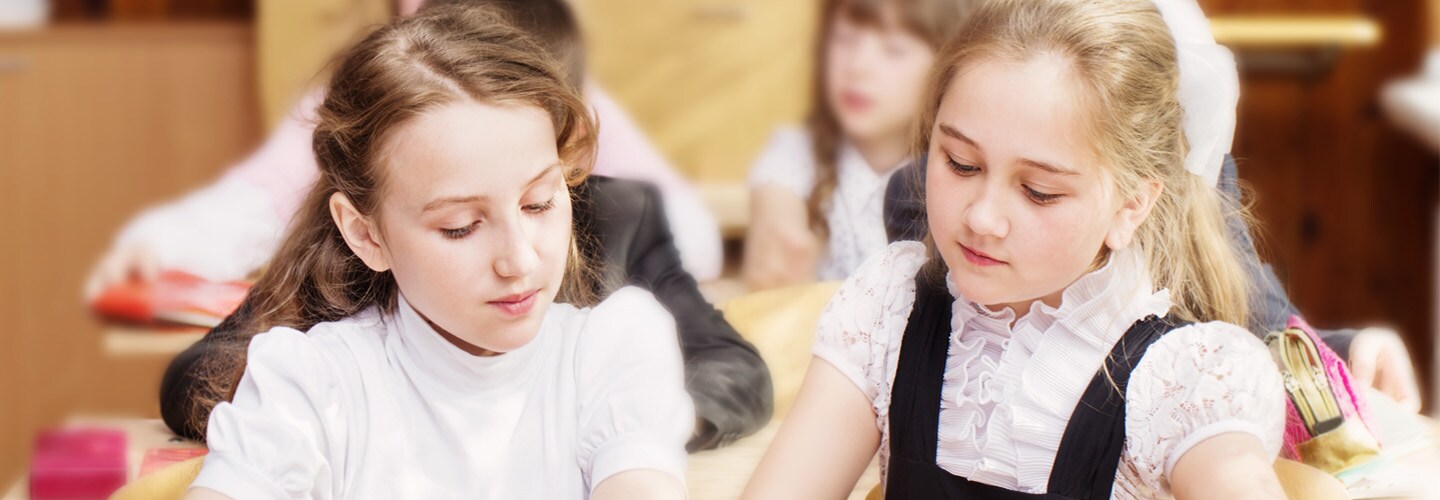
- Young learners
- Language teaching
Benefits of using tablets in the primary classroom
Reading time: 5 minutes
Interactive whiteboards, PCs and laptops are common in many schools worldwide, but have you ever considered using tablets in your young learners' classes?
Tablets can be used for many things. Online research, watching and creating videos, playing games, and digital storytelling are just a few examples. Of course, there's also the added environmental benefit of going paper-free.
In this post, we're going to explore some of the reasons why using tablets can be beneficial in the young learner's classroom and what to consider before you do so.
What are the benefits of using tablets in class?
1. Facilitating engagement
With good direction from the teacher, tablets can emulate natural social interaction and interactivity. They can also offer problem-solving activities, set achievable goals and provide instant feedback.
Moreover, when young learners are truly engaged in an activity, it may be perceived as effortless - and they learn and use their second language (L2) without even realizing it.
2. Introducing authenticity and autonomy
In terms of content, tablets allow us to bring the real world into the classroom at the tap of a screen. We can provide learners with authentic materials via level-and-age-appropriate videos and real-life communication. As well as interaction with other teachers and learners through teams or by using a secure app such as Stars private messaging.
Tablets also promote learner autonomy. They are easy to use, allowing us to take a step back and let our students work at their own pace, being on stand-by as a facilitator when students require help or a little push in the right direction.
3. Promoting creativity, communication and inclusion
Nearly all tablets have a webcam and voice recorder, which means that learner-generated content can be created easily - even without dedicated software.
You can have your students make their own vlogs (video diaries), ebooks, comics, cartoons and movie trailers. All you need to do is to install apps such as Book Creator or this series of apps specifically designed for very young learners from Duck Duck Moose. While these apps have been created for 'fluent-speaker' classrooms, they can easily be adapted to an ELT context.
Tablets also promote communication. This can help improve students' L2 oral skills at any level, when the teacher is there to support and guide them.
One of the greatest advantages of a tablet as opposed to a computer is that anyone can use one and they are much more portable.
For students with special educational needs, tablets can be an essential learning tool and they can also be used by students with low-level motor skills, such as very young learners. Similarly, tablets can work really well with multi-level classes, as they allow you to offer differentiated materials, activities and support where necessary.
4. Enabling online assessment
Tablets can also facilitate interactive online exams or help measure progress. Tests such as 'English Benchmark - Young Learners' are designed with primary learners in mind, to be taken anytime, anywhere. Its game-like format engages students and takes the fear out of being assessed. It also provides instant feedback to the teacher with informative reports and advice for future study.
5. Building relationships with caregivers
Finally, as with any online content, tablets allow you to connect with our learners outside the classroom. You can quickly send links to classwork and feedback to the children's caregivers, fostering a positive relationship and a greater interest in their child's progress and learning.
Tips for using tablets in class
Before implementing the use of tablets in your classroom, there are some things you should consider. Here are some useful tips that will help you gain the maximum benefit from tablets.
Usability:
- Decide what you are going to use the tablets for and when. Are you going to allow students to use the tablets for all parts of the lesson or only for specific activities? This may depend on the number of tablets you have available.
- Use technology to improve an activity or design new activities that would not be possible without the tech, rather than using it to carry on as normal. Think about when a tablet will help learners do something they wouldn't be able to do without one, e.g., make a video or create and share a piece of writing with the whole class.
- Think about using tablets for creation rather than consumption. Your students can (and probably do) spend a fair amount of time consuming videos in their free time. Whether they do this in English or not is another story, but in the classroom, students should use the language as much as possible (see the next point).
- Use the tablets for collaborative tasks that require social interaction and communication. It's unlikely that you will have one tablet per student. Make the most of this limitation by having students work in pairs or small groups. Students can use their own devices individually outside the classroom.
- Try to incorporate tablets into regular classroom activities and interactions. Avoid making them a "reward" or just for "games". Even if games are part of your planned tablet usage, make it clear that students are playing them in order to learn English. Encourage students to think of the tablet as a tool to help them on their learning journey.
General tips
- Try out any apps or widgets before asking students to use them. If necessary, make or find a step-by-step tutorial to help students use an app. There's nothing worse than having a class of twenty-five students all raising their hands at the same time because they don't know where to start.
- Have clear rules and guidelines for tablet use. Educate students about using the equipment responsibly. Do this before you hand out tablets the first time.
- Provide students and parents with a list of recommended apps to continue their home learning. Whether you have a class set of tablets or are using BYOD (Bring Your Own Device), many students will have access to a tablet or mobile phone at home, which they can use for further practice. Students will likely be motivated to continue playing games at home and may wish to show their parents and friends any content they've created in class.
Practicalities
- Consider the hardware and technical requirements. Do you need a Wi-Fi connection? How many devices will you have? Which apps and programs do you want to use?
- Ensure the features and apps you plan to use suit the age group you're teaching. Do some research, and if possible, choose apps designed for educators, avoiding freebie apps that may contain advertising. Block any websites you think unsuitable and install a search engine with child-friendly filters.
- Set the language of the devices to English. Even if your students are very young, they'll pick up useful language and will be more inclined to use English as they are using the tablet.
- Decide where you will keep the tablets and how they will be maintained. How often and where will they be charged?
- Think about how you can flexibly set up your classroom to incorporate collaborative tablet use. Move tables together to make group work easier. Create workstations or even have cushions or bean bags in a corner of the classroom.
Using tablets to assess student progress with Benchmark
With the right software, tablets can allow us to conduct formative assessments through immediate feedback and learning analytics.
We have developed our own English-language test for children aged 6 to 13 in an app designed specifically for tablet use. This fun, game-like test is highly motivating and assesses all four skills in a relaxed environment, removing the stress of traditional exams. It also allows you to see where each learner needs more improvement, providing recommendations on what to teach next and suggested activities in selected Pearson courseware.







